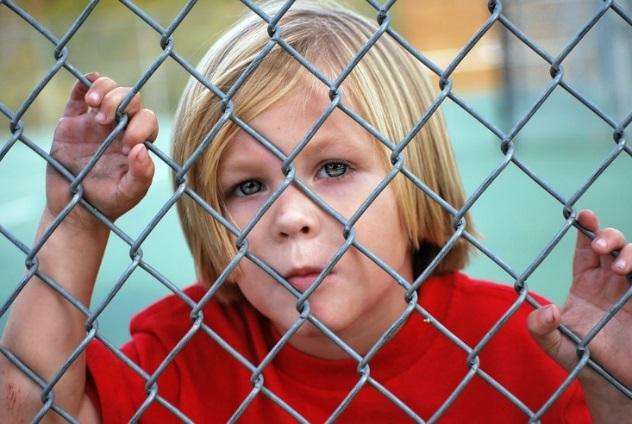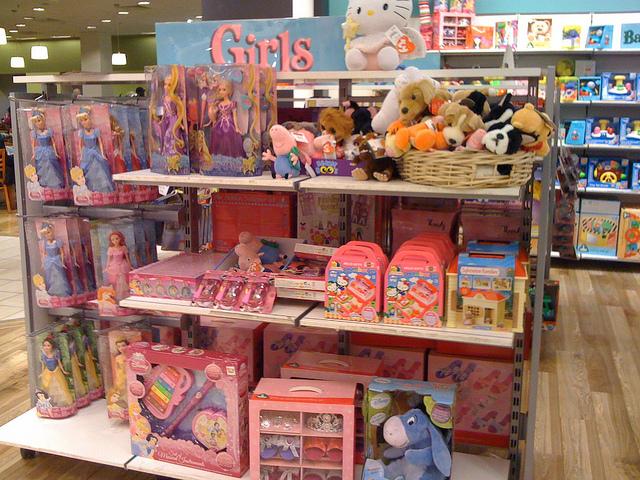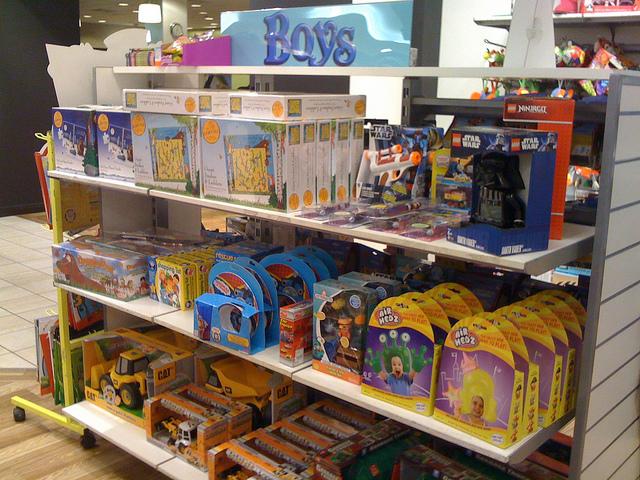8.5 Identity formation
From the ages of three to six years old, children’s understanding of themselves and their role in the world expands greatly. This coincides with expanding cognitive and language skills as well as relationships with others.
Early childhood is a time of forming an initial sense of self. A self-concept or idea of who we are, what we are capable of doing, and how we think and feel is a social process that involves taking into consideration how others view us. So, in order to develop a sense of self, you must have interaction with others. Interactionist theorists Cooley and Mead offer two interesting explanations of how a sense of self develops.
Charles Horton Cooley (1964) suggests that our self-concept comes from looking at how others respond to us. This process, known as the looking-glass self, involves looking at how others seem to view us and interpreting this as we make judgments about whether we are good or bad, strong or weak, beautiful or ugly, and so on. Of course, we do not always interpret others’ responses accurately, so our self-concept is not simply a mirror reflection of the views of others. After forming an initial self-concept, we may use it as a mental filter screening out those responses that do not seem to fit our ideas of who we are. Some compliments may be negated, for example. The process of the looking-glass self is pronounced when we are preschoolers, or perhaps when we are in a new school or job or are taking on a new role in our personal lives and are trying to gauge our own performances. When we feel more sure of who we are, we focus less on how we appear to others (Leon, A.).

Figure 8.6. A child looking at herself wearing glasses in a mirror.
Herbert Mead (1967) offers an explanation of how we develop a social sense of self by being able to see ourselves through the eyes of others. There are two parts of the self: the “I,” which is the part of the self that is spontaneous, creative, innate, and is not concerned with how others view us, and the “me,” or the social definition of who we are.
When we are born, we are all “I” and act without concern for how others view us. But the socialized “me” develops when we are able to consider how one important person views us. This initial stage is called “taking the role of the significant other.” For example, a child may pull a cat’s tail and be told by his mother, “No! Don’t do that, that’s bad,” while receiving a slight slap on the hand. Later, the child may mimic the same behavior toward the self and say aloud, “No, that’s bad,” while patting his own hand. What happened? The child is able to see himself through the eyes of the mother. As the child grows and is exposed to many situations and rules of culture, he begins to view the self in the eyes of many others through these cultural norms or rules. This is referred to as “taking the role of the generalized other” and results in a sense of self with many dimensions. The child comes to have a sense of self as student, as friend, as son, and so on.
One of the ways to gain a clearer sense of self is to exaggerate those qualities that are to be incorporated into the self. Preschoolers often like to exaggerate their own qualities or to seek validation as the biggest, smartest, or child who can jump the highest. This exaggeration tends to be replaced by a more realistic sense of self in middle childhood.
8.5.1 Self-Esteem
Early childhood is a time of forming an initial sense of self. In contrast to self-concept, self-esteem is an evaluative judgment about who we are. The emergence of cognitive skills in preschoolers results in improved perceptions of the self, but they tend to focus on external qualities, which are referred to as the categorical self. When researchers ask young children to describe themselves, their descriptions tend to include physical descriptors, preferred activities, and favorite possessions. For example, the self-description of a 3-year-old might be a 3-year-old girl with red hair who likes to play with blocks. However, even children as young as 3 years old know there is more to themselves than these external characteristics.
Harter and Pike (1984) challenged the method of measuring personality with an open-ended question as they felt that language limitations were hindering the ability of young children to express their self-knowledge. They suggested a change to the method of measuring self-concept in young children, whereby researchers provide statements that ask whether something is true of the child (e.g., “I like to boss people around”, “I am grumpy most of the time”). They discovered that in early childhood, children answer these statements in an internally consistent manner, especially after the age of 4(Goodvin et al., 2008) and often give similar responses to what others (parents and teachers) say about the child (Brown et al., 2008; Colwell & Lindsey, 2003).

Figure 8.7. Young children don’t always feel good about themselves.
Young children tend to have a generally positive self-image. This optimism is often the result of a lack of social comparison when making self-evaluations, and with comparison between what the child once could do to what they can do now (Ruble et al., 1980; Kemple, 1995). However, this does not mean that preschool children are exempt from negative self-evaluations. Preschool children with insecure attachments to their caregivers tend to have lower self-esteem at age 4 (Goodvin et al., 2008). Maternal negative affect (emotional state) was also found by Goodwin and her colleagues to produce more negative self-evaluations in preschool children.
8.5.2 Gender Identity
Gender identity is an important dimension of the self that develops more fully in the preschool years. Preschoolers become increasingly interested in their differences and similarities, both physically and in terms of activities that appear to be acceptable based on gender. While 2-year-olds can identify some differences and learn whether they are boys or girls, preschoolers become more interested in what it means to be male or female. This self-identification or gender identity is followed sometime later with gender constancy or the knowledge that gender does not change. Gender roles or the rights and expectations that are associated with being male or female are learned throughout childhood and into adulthood.
8.5.2.1 The Social Reinforcement of Gender
Learning theorists suggest that gender role socialization is a result of the ways in which parents, teachers, friends, schools, religious institutions, media, and others send messages about what is acceptable or desirable behavior in males or females. This socialization begins early—in fact, it may even begin the moment a parent learns that a child is on the way. Knowing the sex of the child can conjure up images of the child’s behavior, appearance, and potential on the part of a parent. And this stereotyping continues to guide perception through life. Consider parents of newborns shown a 7lb, 20 in. baby, wrapped in blue (a color designating males) describe the child as tough, strong, and angry when crying (Figure 8.9). Shown the same infant in pink (a color used in the United States for baby girls), these parents are likely to describe the baby as pretty, delicate, and frustrated when crying (Figure 8.8) (Maccoby & Jacklin, 1987). Female infants are held more, talked to more frequently and given direct eye contact, while male infants play is often mediated through a toy or activity.
Sons are given tasks that take them outside the house and that have to be performed only on occasion while girls are more likely to be given chores inside the home such as cleaning or cooking that is performed daily. Sons are encouraged to think for themselves when they encounter problems and daughters are more likely to be given assistance even when they are working on an answer. This impatience is reflected in teachers waiting less time when asking a female student for an answer than when asking for a reply from a male student (Sadker & Sadker, 1994). Girls are given the message from teachers that they must try harder and endure in order to succeed while boys’successes are attributed to their intelligence. Of course, the stereotypes of advisors can also influence which kinds of courses or vocational choices girls and boys are encouraged to make.
Friends discuss what is acceptable for boys and girls and popularity may be based on modeling what is considered ideal behavior or looks for the sexes. Girls tend to tell one another secrets to validate others as best friends while boys compete for position by emphasizing their knowledge, strength or accomplishments. This focus on accomplishments can even give rise to exaggerating accomplishments in boys, but girls are discouraged from showing off and may learn to minimize their accomplishments as a result.
Gender messages abound in our environment. But does this mean that each of us receives and interprets these messages in the same way? Probably not. In addition to being recipients of these cultural expectations, we are individuals who also modify these roles (Kimmel, 2008). Based on what young children learn about gender from parents, peers, and those who they observe in society, children develop their own conceptions of the attributes associated with maleness or femaleness which is referred to as gender schemas.
How much does gender matter? In the United States, gender differences are found in school experiences (even into college and professional school, girls are less vocal in the classrooms and much more at risk for sexual harassment from teachers, coaches, classmates, and professors), in social interactions and in media messages. The stereotypes that boys should be strong, forceful, active, dominant, and rational and that girls should be pretty, subordinate, unintelligent, emotional, and gabby are portrayed in children’s toys, books, commercials, video games, movies, television shows and music.
|
Figure 8.8. Store shelves filled with pink and purple colors and girls’ toys. |
Figure 8.9. Store shelves filled with primary colors and boys’ toys. |
In adulthood, these differences are reflected in income gaps between men and women where women working full-time earn about 74 percent the income of men, in higher rates of women suffering rape and domestic violence, higher rates of eating disorders for females, and in higher rates of violent death for men in young adulthood. Each of these differences will be explored further in subsequent chapters.
8.5.2.2 Gender Dysphoria
A growing body of research is now focused on Gender Dysphoria, or the distress accompanying a mismatch between one’s gender identity and biological sex (American Psychiatric Association, 2013). Although prevalence rates are low, at approximately 0.3 percent of the U.S. population, children who later identified as transgender, often stated that they were the opposite gender as soon as they began talking (Russo, 2016). Comments such as stating they prefer the toys, clothing and anatomy of the opposite sex, while rejecting the toys, clothing, and anatomy of their assigned sex are criteria for a diagnosis of Gender Dysphoria in children. Certainly, many young children do not conform to the gender roles modeled by the culture and even push back against assigned roles. However, they do not experience discomfort regarding their gender identity and would not be identified with Gender Dysphoria. A more comprehensive description of Gender Dysphoria, including current treatments, will be discussed in the chapter on adolescence.
8.5.3 Licenses and Attributions for Identity formation
“Identity Formation” is adapted by Christina Belli from Understanding the Whole Child, Understanding the Whole Child Copyright © by hofera All Rights Reserved and from Children’s Development by Ana R. Leon which is licensed under CC BY 4.0.
“The Social Reinforcement of Gender” is adapted from Lifespan Development – Module 5: Early Childhood by Lumen Learning references Psyc 200 Lifespan Psychology by Laura Overstreet, licensed under CC BY 4.0; Lifespan Development: A Psychological Perspective by Martha Lally and Suzanne Valentine-French is licensed under CC BY-NC-SA 3.0.
“Child Maltreatment” is adapted from Children’s Development by Ana R. Leon is licensed under CC BY 4.0.
“Gender Dysphoria” is adapted from Lifespan Development: A Psychological Perspective by Martha Lally and Suzanne Valentine-French is licensed under CC BY-NC-SA 3.0.
Figure 8.6 “A child looking at herself wearing glasses in a mirror” pxhere is licensed under CC0 Public Domain.
Figure 8.7. “Young children don’t always feel good about themselves” is licensed under CC0 Public Domain.
Figure 8.8. “Store shelves filled with pink and purple colors and girls’ toys” by Janet McKnight is licensed under CC BY 2.0
Figure 8.9. “Store shelves filled with primary colors and boys’ toys” by Janet McKnight is licensed under CC BY 2.0
Figure 8.12. “A Child Hiding” by Joint Base Elmendorf-Richardson Alaska is licensed under CC0 Public Domain.


